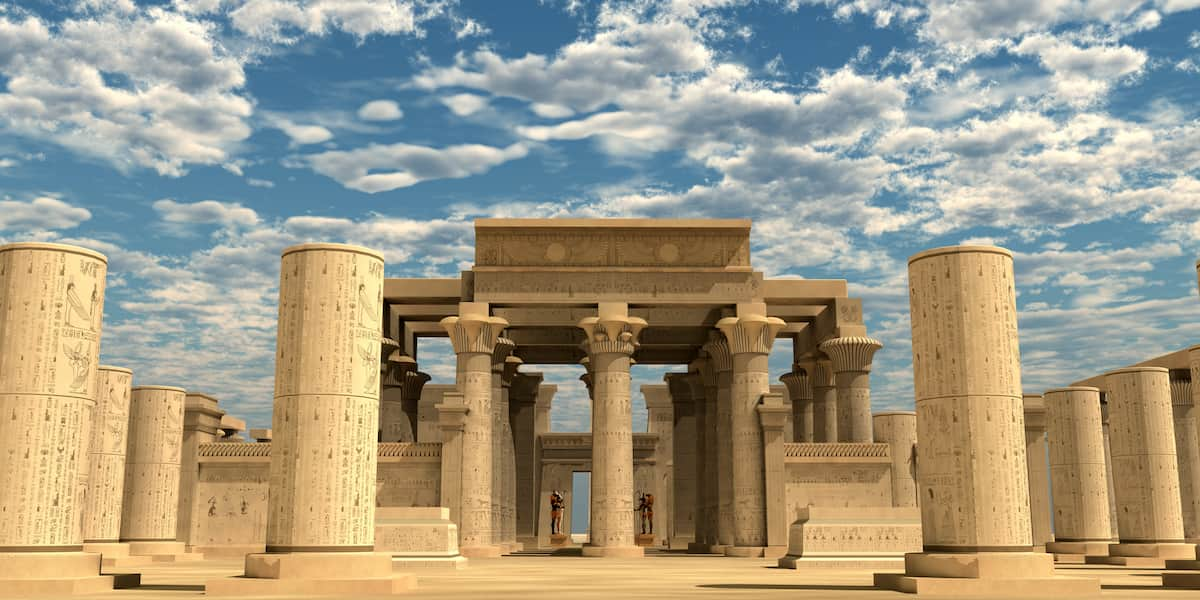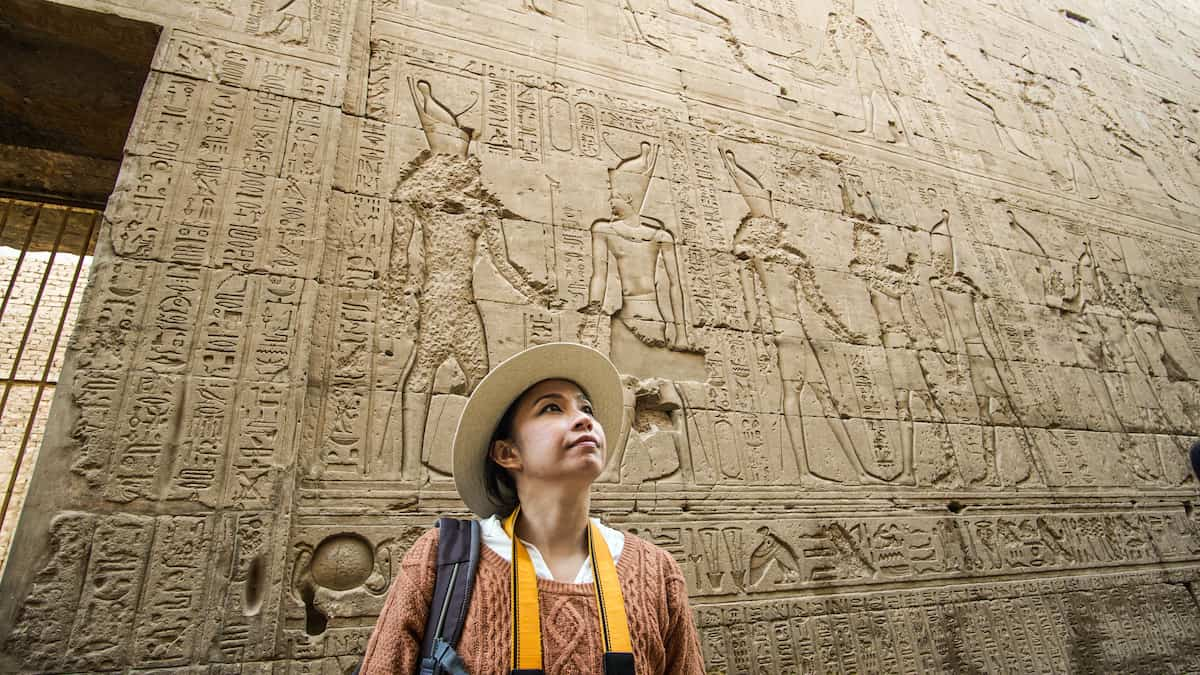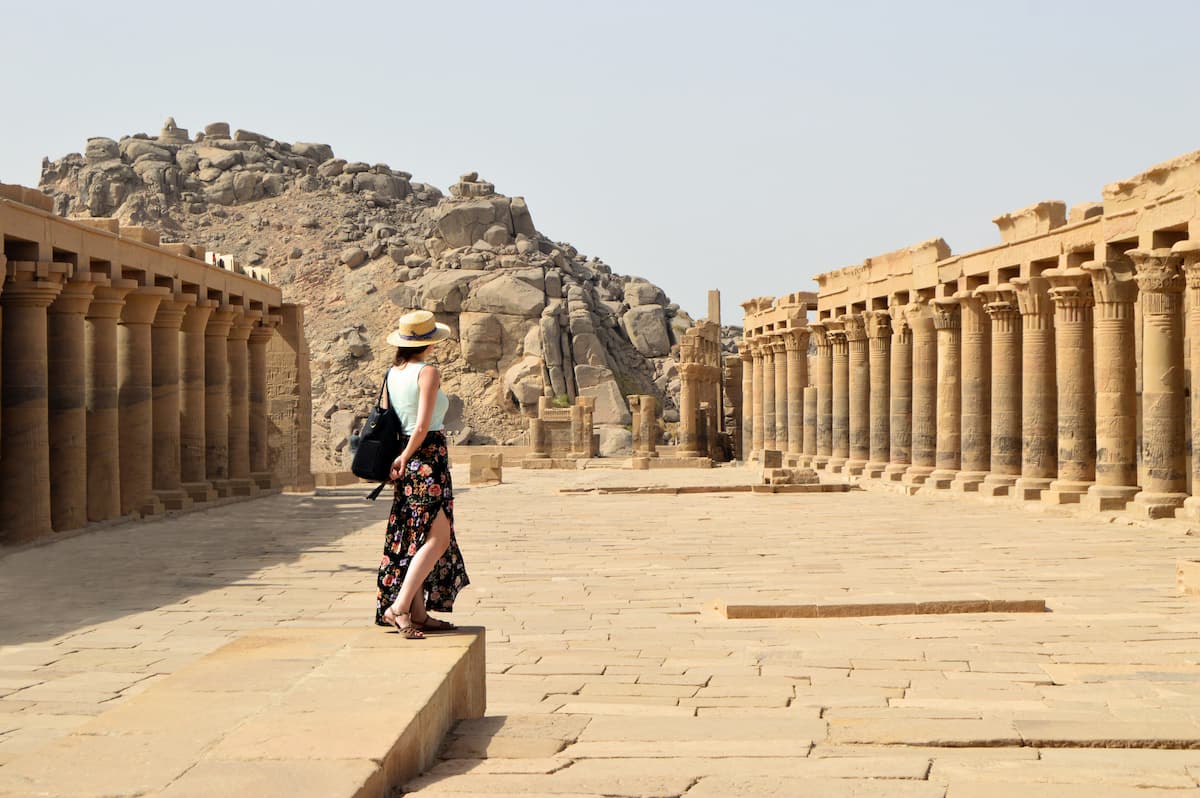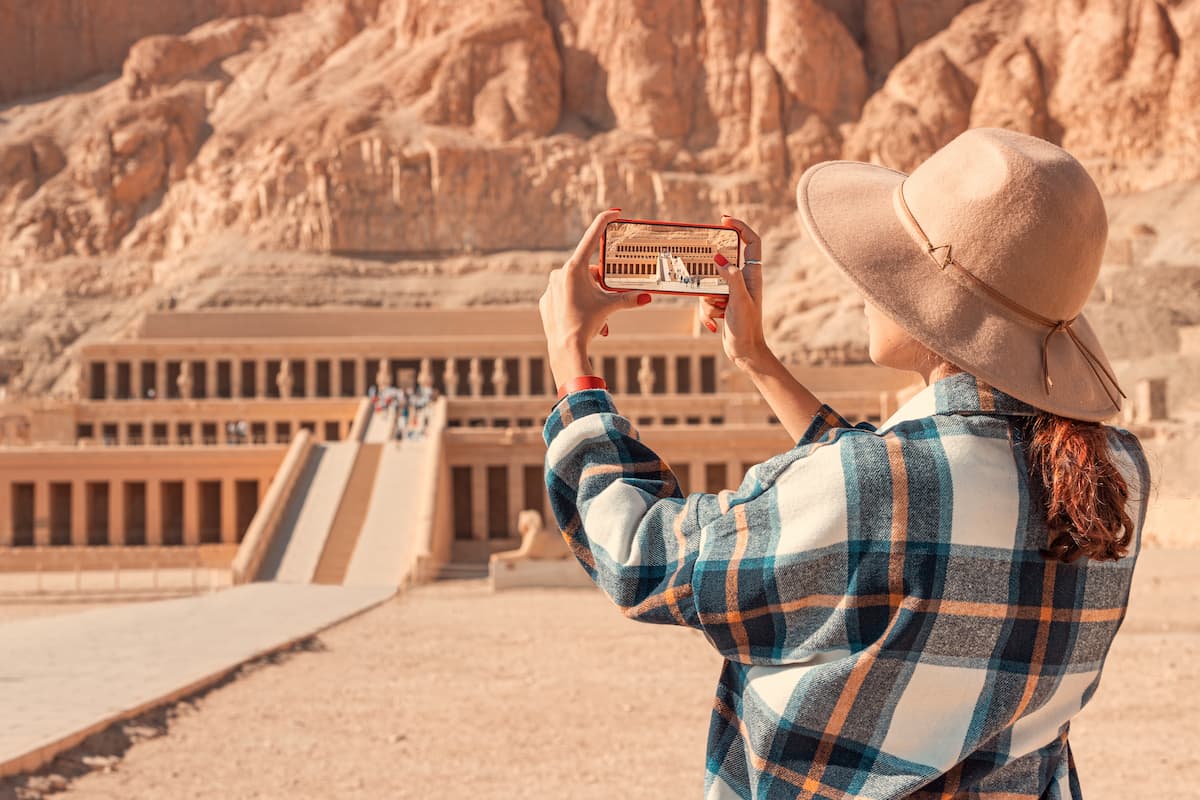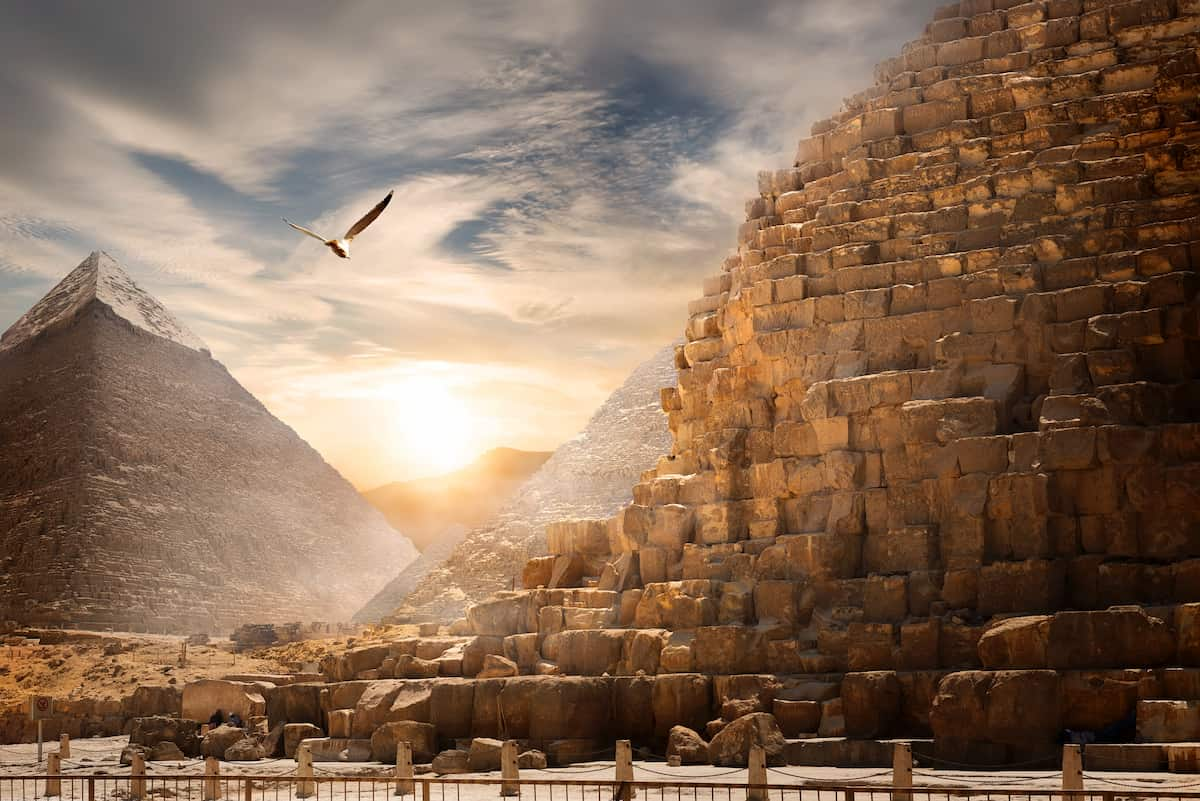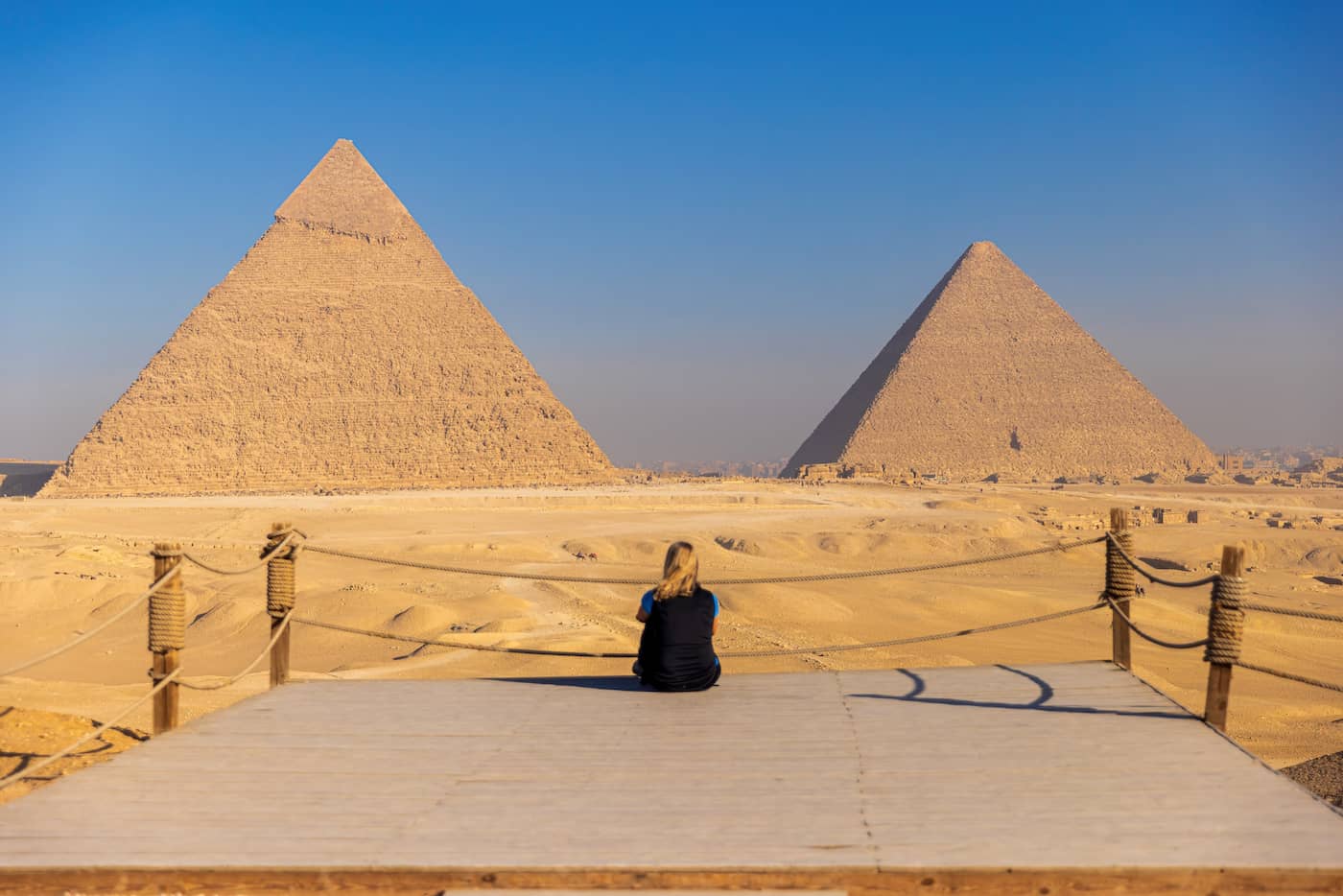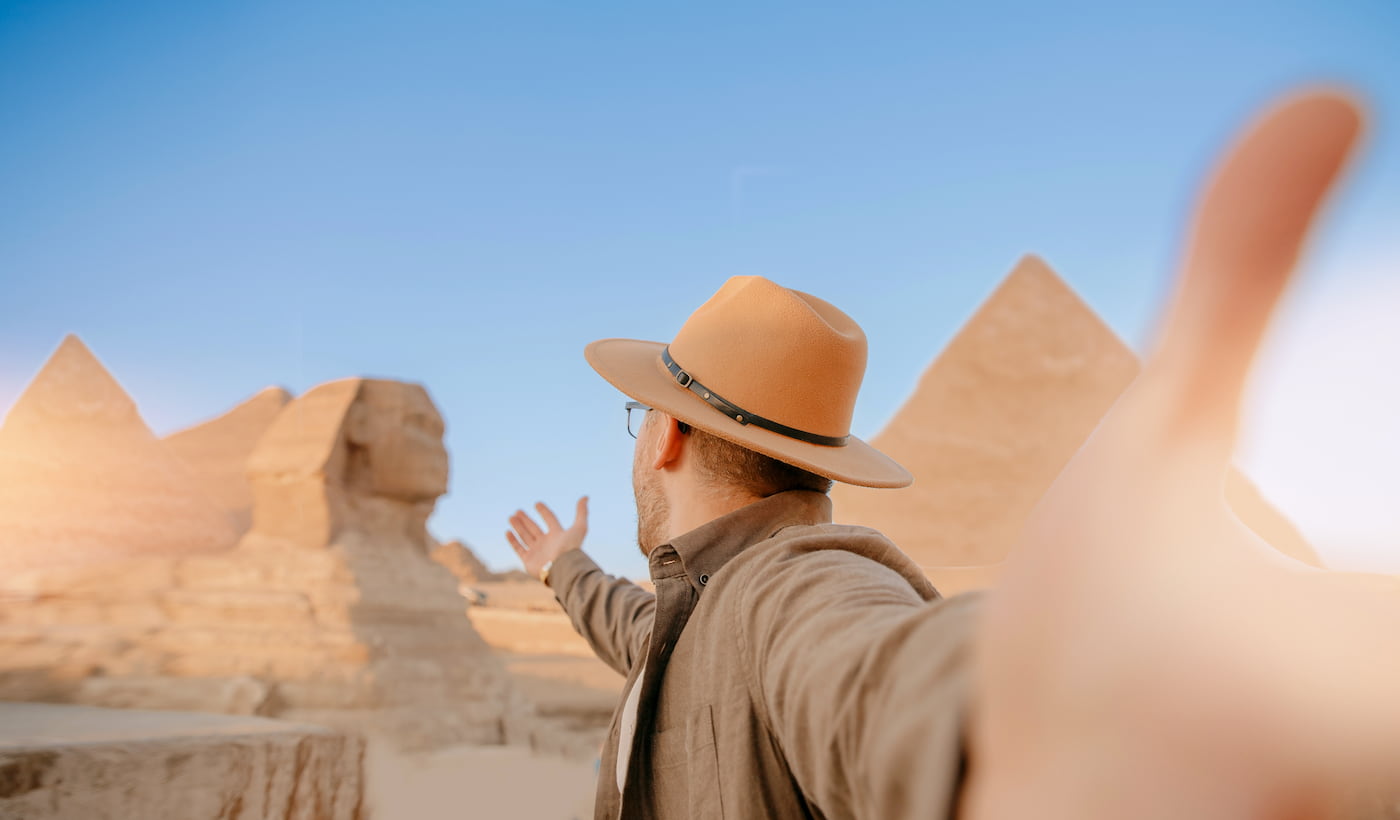Ancient Egyptian Architecture Made Simple
Discover the legacy of ancient Egypt architecture. These ancient Egyptian architectural features were made to last and tell the story of the pharaohs and how they built an empire that lasted for decades. Moreover, such an interesting building as the majestic pyramids of Giza, the grand temples of Luxor, each one tells a different story. Furthermore, get to know how their belief in the afterlife, theocratic principles shaped a civilization that continues to shine.
Did you know that some of the buildings in Egypt were built more than 4,000 years ago, and they are still standing today? These ancient buildings were all made together by hand without the use of modern machines. Till now, they still impress people from across the globe.
Here, we shall know about the kingdom of ancient Egyptian architecture. You will learn about how the Egyptians built enormous pyramids, temples, and tombs underground. We will also talk about why they constructed these buildings and what they meant to the people of that time. Whether you are interested in history, travel, or just curious about the facts, this guide will help you understand why Egypt’s buildings gained such fame and importance.
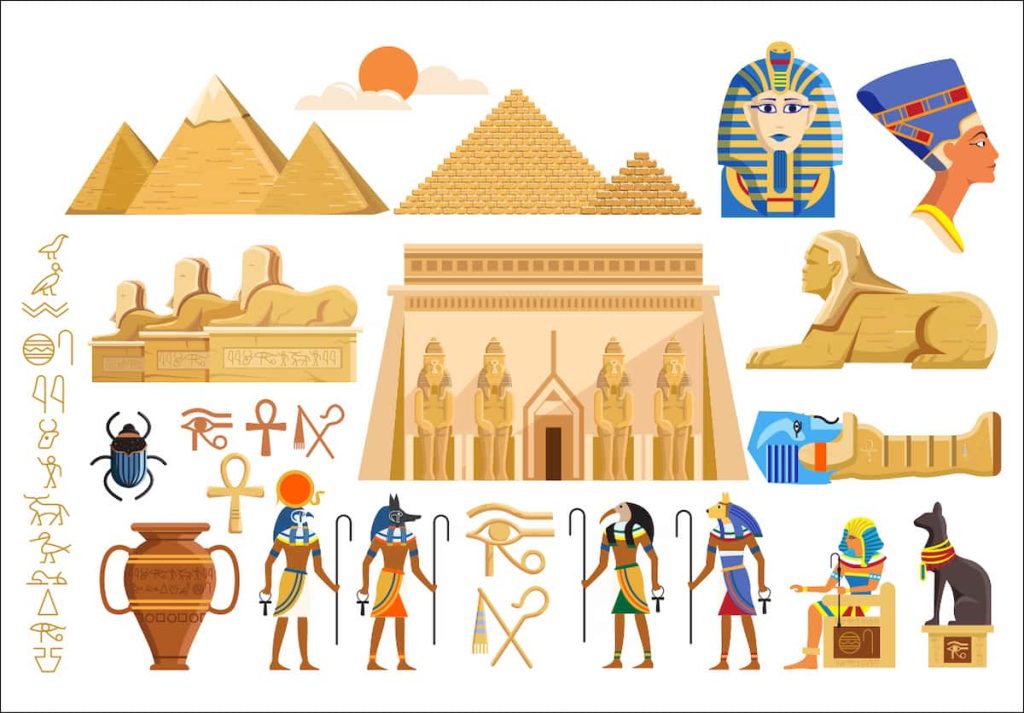
Ancient Egyptian Architecture Made Simple
1- History of Ancient Egyptian Architecture
The ancient Egypt architecture story began more than 5000 years ago. about 3100 BC, when Upper and Lower Egypt were unified under the first Pharaoh, King Narmer. In the earliest period, buildings were constructed of mud bricks, which were easy to develop but not durable. These mud bricks were used mostly in building houses, palaces, and small shrines.
During the Old Kingdom, famous around 2686–2181 BC, stronger and taller structures came into being through the use of limestone and granite. So arose the Step Pyramid of Djoser in Saqqara, designed by Imhotep; it was the first stone edifice of such enormity in the world. Then followed the great Pyramids at Giza for Khufu, Khafre, and Menkaure.
The temple constructions were at their peak during the Middle Kingdom and the New Kingdom. Moreover, Temples such as Karnak Temple, Luxor Temple, and Abu Simbel were built for the gods. These buildings were full of columns, hieroglyphs, and detailed reliefs of religious scenes. Lastly, all types of columns will be explained later in this blog.
Throughout the millennia, Egyptian architecture was especially concerned with religion, the afterlife, and the power of kingship. Crystalizations of Egyptian ideas spread from there to other cultures and still produce wonder among many for their beauty and skill.
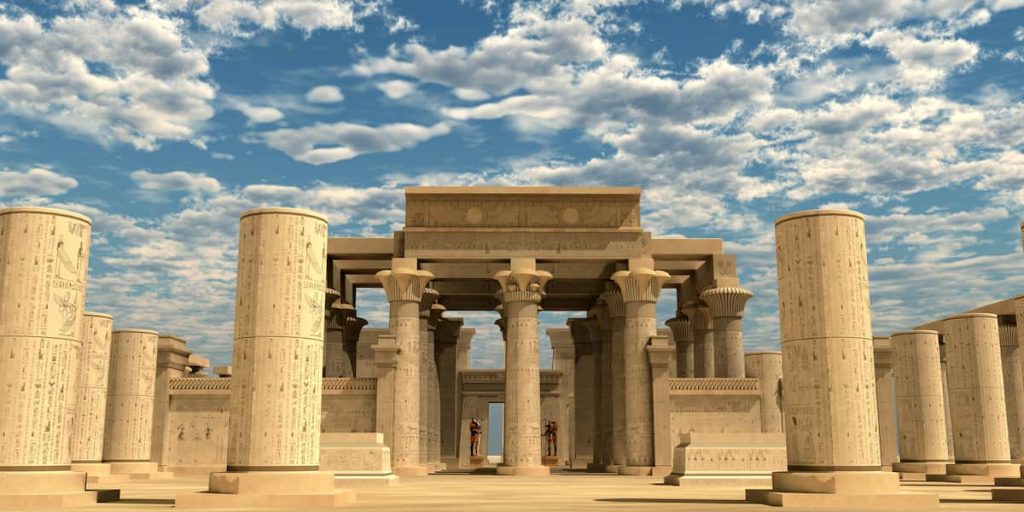
Ancient Egyptian Architecture
2- What Is Ancient Egyptian Architecture
The Ancient Egypt architecture is very old and contains the methods of construction used by the people of ancient Egypt. Furthermore, it includes the design and construction of everything and other tombs. Additionally, strong materials such as limestone, sandstone, and granite were used to build the structures, and this strength has kept some of them standing for thousands of years.
Most of these ancient Egypt architecture buildings, however, were not for use by the general populace. They served either for very powerful people, such as the pharaohs, or for religious functions. Pyramids, for instance, were made as tombs for kings, and temples were constructed for their numerous gods and goddesses. These buildings were of great beauty but filled with artwork, carvings, and symbols that recounted the tales of their belief system.
They were strong, well-designed, and full of meaning. This represents how much Egyptians cared about the afterlife, religion, and their rulers.
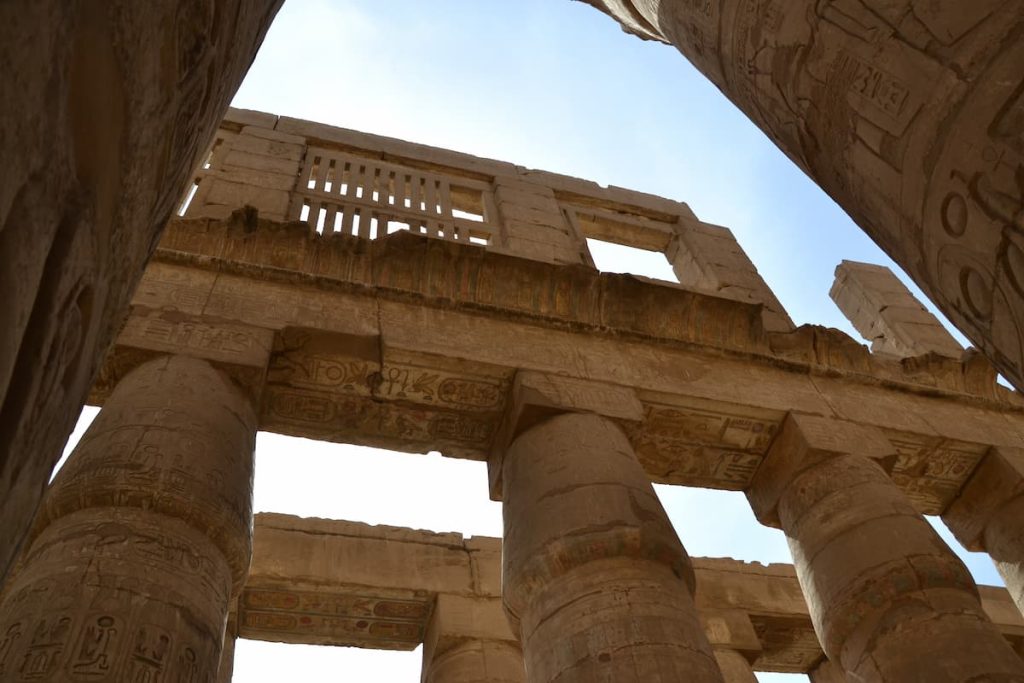
Karnak Temple
3- Ancient Egypt Architecture Types
The Ancient Egyptian Architecture always came in many different shapes. Moreover, every traveler coming to Egypt can see and enjoy the architectural brilliance and artistic creativity of the ancient Egyptians. Additionally, the Egyptians were so successful in cultivating their environment and establishing everlasting structures. These establishment covers many important facts and information, the principles of Egypt architecture that we can see today. Lastly, they had principles for each of the different types of Egypt architecture and special characteristics.
-
The Architecture of Ancient Egyptian Pyramids
The pyramids are the most famous type of ancient Egypt architecture known across the world. They were tombs for pharaohs who were considered kings and gods combined. The Egyptians believed in an afterlife and also thought that the pyramid helped elevate the king’s spirit up to the sky to join the gods.
The most famous pyramids are those of Giza, near Cairo. They include the Great Pyramid of Khufu, the Pyramid of Khafre, and that of Menkaure. The Great Pyramid is the largest; over 2 million limestone blocks were used to build this monument, which, standing about 146 meters high, was the tallest man-made structure in the world for more than 3 millennia.
The pyramids are strong proof of mathematical principles mixed with symbolism. Each side is perfectly aligned along one of the cardinal directions: north, south, east, or west. Hidden inside were chambers and passageways that would shield the body of the pharaoh, along with the treasures buried with him.
Thousands of workers, subject to years of labor, were enlisted to construct these buildings, and with it came a fierce religious belief in life, eternity, and royal power. In the present day, these monuments stand as one of the architectural wonders of mankind.

Pyramids Of Giza In Ancient Egyptian Architecture
-
The Architecture of Ancient Egyptian Temples
Ancient Egyptian temples were considered among the most important structures in Egypt. They were constructed for the worshiping gods and goddesses whom the Egyptians believed in. The temples were not only places to pray; they included sacred facts where priests carried out specific rituals, made gifts to the gods, and celebrated certain festivals.
Temple architecture followed a specific plan. Moreover, most temples had a very big entrance called a pylon leading to open courtyards. From there, a visitor will walk into decorated halls lined with tall columns that were mostly shaped like lotus or papyrus plants. The very heart of the temple was the shelter, a small chamber in which the statue of the god lived.
The walls of the temples are decorated with beautiful carvings and hieroglyphics. Some show the Pharaoh offering to the gods or achieving victory. Karnak Temple, Luxor Temple, and Abu Simbel Temple are testimonies to the architectural skills of the Egyptians. These temples never remained just buildings; they were monuments to faith, royalty, and eternity.
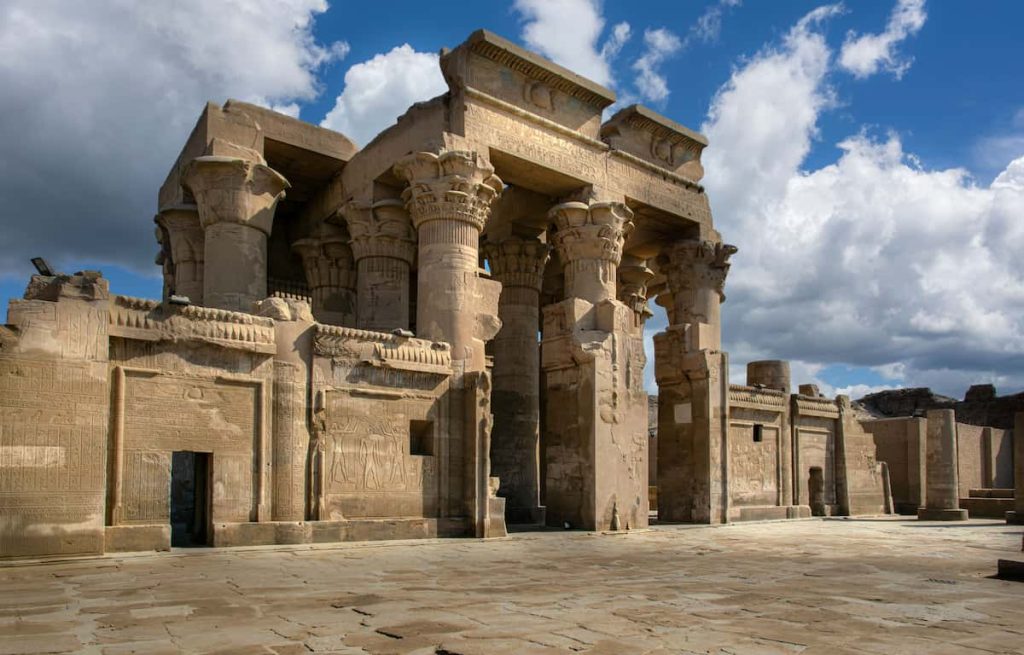
Crocodile God Temple In Edfu Architecture
-
The Architecture of Ancient Egyptian Houses
The homes of the ancient Egyptians, in contrast to the big temples and pyramids built for gods and kings, were small places. Rich homes for rich people are too big, but simple houses made of mud bricks housed common residents. Mud bricks were inexpensive, easy to make, and protected homes against the heat during the day and the cold at night.
Initially, it would be two or three rooms and a flat roof where cooking would be done, or where family members would sleep, or just sit and relax during the evening. There were hardly any windows, as it helped keep out the intense sun and sand. Floors were sometimes made of mud or clay, and walls were sometimes painted white to keep them cool.
There were houses with gardens, pools, and columns in the courtyard for rich families. These homes were much more decorated and had many rooms, some of which even had upstairs areas.
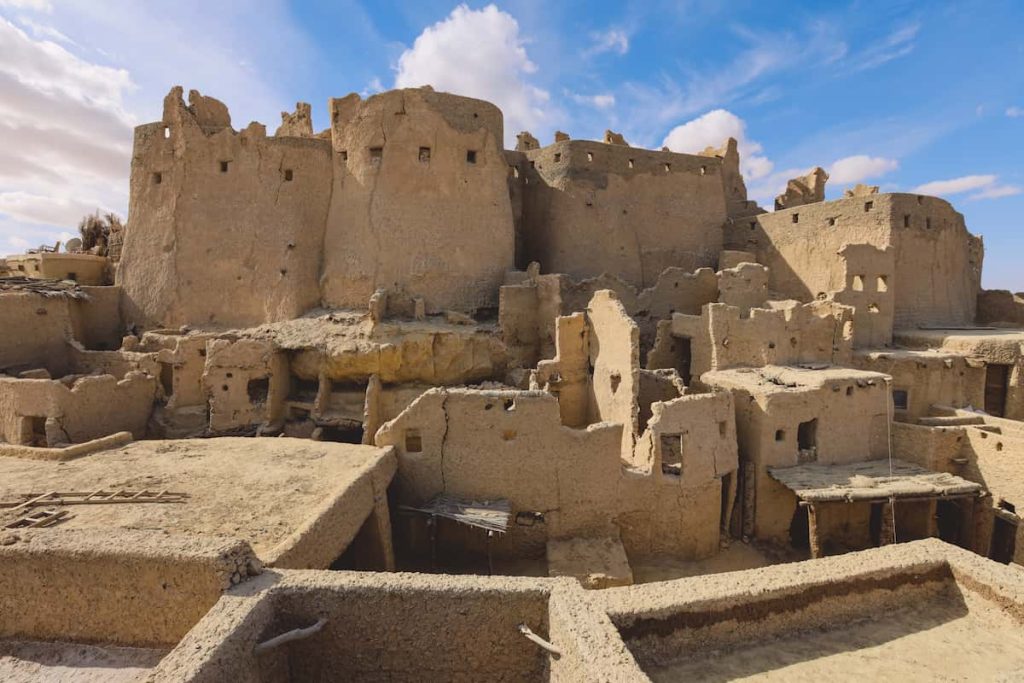
Siwa in Ancient Egyptian Architecture
-
The Architecture of Ancient Egyptian Columns
Ancient Egypt architecture involved a great diversity of column styles, with over 30 various types being recognized. History recounts that column manufacture began with the architect Imhotep somewhere around 2600 BC, who innovated design by introducing stone columns derived from bundles of reeds-like papyrus, lotus, and palm in the whole complex of the Djoser Step Pyramid.
This architectural style had its origin in the ancient reed-built shrines that later in Egypt architecture developed into the faceted cylinders. These columns were carved from stone and featured beautiful carving, painted hieroglyphs, texts, ritual symbols, and elements from nature. They are prominently featured in the grandiosity of the Great Hypostyle Hall of Karnak, dating to about 1224 BC and having 134 columns arranged in 16 rows, some of which rise to a height of 24 meters.
The design of columns was subject to location within the temple, with bud-style columns being common in outer temple courts and open-style capitals in the more central areas. These columns were natural form imitations such as lotuses, papyrus, or palm trees, and were often joined in sectional blocks. The fluted columns are thought to be the first ever made in stone, and in fact, all other forms evolved from this design.
-
Symbolism of Ancient Egyptian Columns
Other important forms include palmiform columns, lotiform columns, papyriform columns, coniform columns, tent-pole columns, campaniform columns, composite columns, Hathoric columns with cow-headed goddess Hathor, and Osiride pillars with front surfaces of the statue of the god Osiris. These styles evolved into greater variability in Graeco-Roman times, some appearing from the Middle Kingdom, having gone on into late times, such as Hathoric columns.
One of the major and visible types of columns is the papyriform column, tracing its origins to the beginning of the 5th Dynasty. These columns were made from bundles of lotus (or papyrus) stems, bound with decorative bands; they carry a distinct form of capital nearly unlike any other. In fact, the capital widens before narrowing again, similar to a flower just about to grow, instead of the usual bellflower shape. The base would also taper like a lotus stem and have a repeating stipule decoration. Home to these columns is the Luxor Temple, where they might be suggesting images of bunches of papyrus, a symbol of wetlands in which the ancient Egyptians believed the universe had come to be.
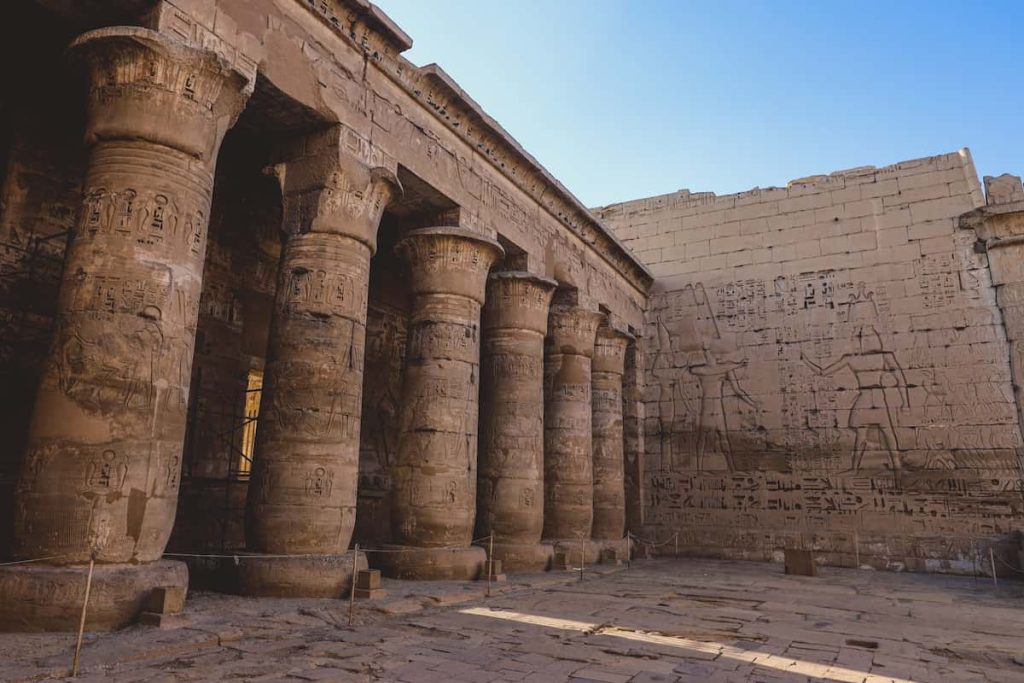
Ancient Egyptian Architecture
-
The Architecture of Ancient Egyptian Tombs
Ancient Egyptian tombs were built to shield the dead and prepare them for the afterlife. Death, they felt, was no end but the beginning of a new life. Therefore, tombs were designed with great care to house the body and the belongings and treasures of the dead, particularly for the Pharaohs and nobles.
The oldest tombs consisted of mastabas; these were flat-roofed stone or mud-brick edifices with underground burial chambers. These were then developed into much larger pyramids such as the ones at Giza. During the New Kingdom, pharaohs were buried in the Valley of the Kings, which lay hidden amongst the desert hills close to Luxor. The rock-cut tombs carved far into the cliffs sought to ward off grave robbers.
Additionally, the walls of the tombs are covered with hieroglyphs, paintings, and religious texts such as the Book of the Dead. Which illustrates the journey of the soul in the underworld. Other architectural elements include narrow corridors, chambers, and sometimes false doors to mislead potential intruders.
The tombs were much more than mere burial places; they symbolized sacred spaces for the soul’s everlasting existence. They stand as a testament to the Egyptians’ profound belief in eternity and the religion that gave birth to the divine kings and their power.
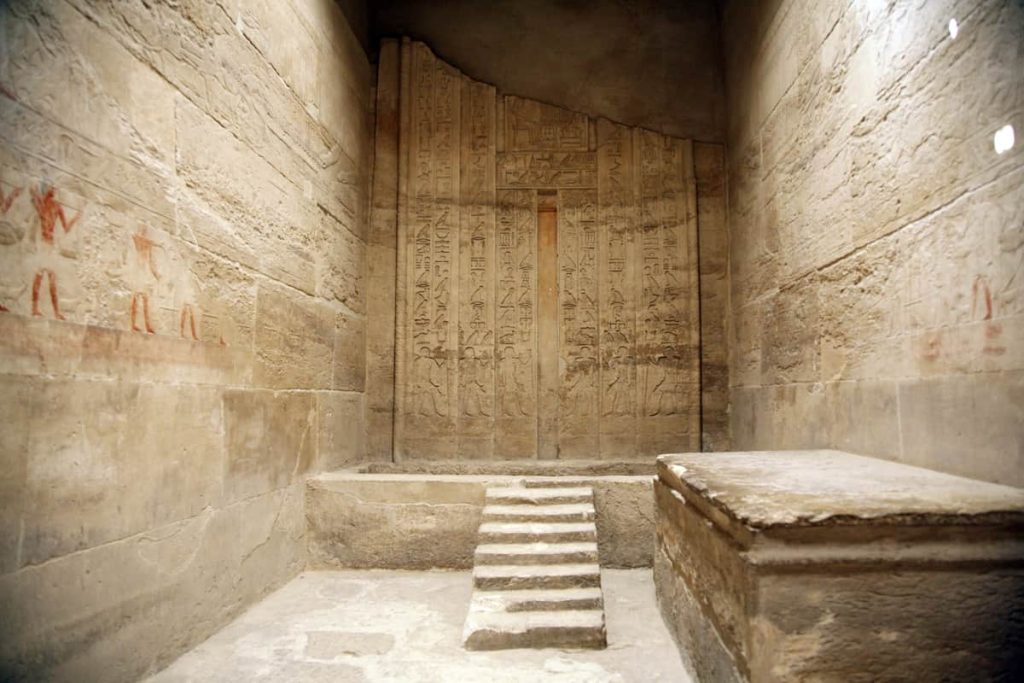
The Architecture of Ancient Egyptian Tombs
-
The Architecture of Ancient Egyptian Palaces
Ancient Egyptian palaces were splendid homes built for the Pharaohs and their families. Generally, palaces were constructed in imperfect materials like mud brick, unlike temples and pyramids that were made to last forever. This is the reason why hardly any ancient Egyptian palaces have survived to the present day.
The design of the palace was a setting for comfort, luxury, and royal might. Open-air courtyards were accorded to them in numerous rooms amidst beautifully painted walls. Some palaces had gardens, pools, and columns all for the enjoyment of their owners, indicating how much the pharaohs cared for beauty and comfort.
An excellent example is the Palace of Malkata, constructed by Amenhotep III in the New Kingdom, with hundreds of rooms, colorful decorations, and located near the Nile River. Another example would be the palace at Amarna, where Akhenaten reigned in an unusual epoch of Egyptian history.
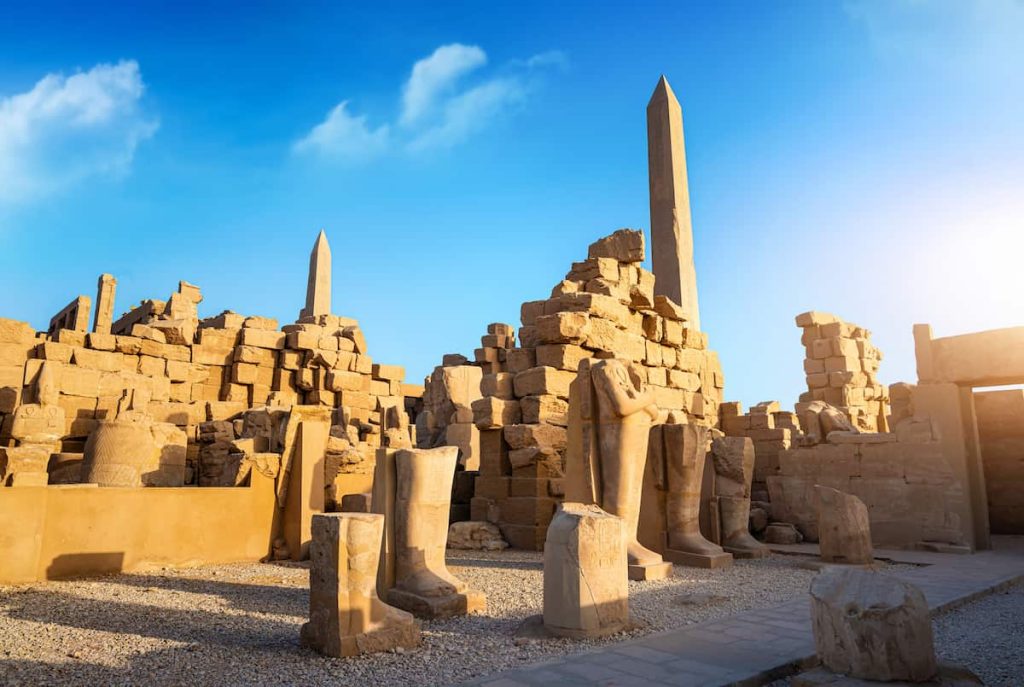
The Architecture of Ancient Egyptian Temples and Palaces
-
The Architecture of Ancient Egyptian Obelisks
The Obelisks, tall stone monuments these structures, stand with four faces and a pointed tip. Obelisks were important in the architecture of ancient Egypt architecture; they would be erected at temple entrances as a sign of respect toward the gods, particularly the sun god Ra. The very shape of the obelisk symbolized a ray of sunlight, showing the association linking the pharaoh with the divine and the sun.
Most obelisks consisted of single chunks of red granite, usually transported from Aswan. These huge weights of stone were handcrafted on whichever side it was carved. As difficult as to imagine, the Egyptians themselves equally managed their transportation and erection with their engineers and laborers’ skills.
Obelisks were typically inscribed with hieroglyphs narrating the achievements of the pharaoh and his/her commitment to the gods. Many stood in pairs, lining the doorstep of temples like Karnak and Luxor.
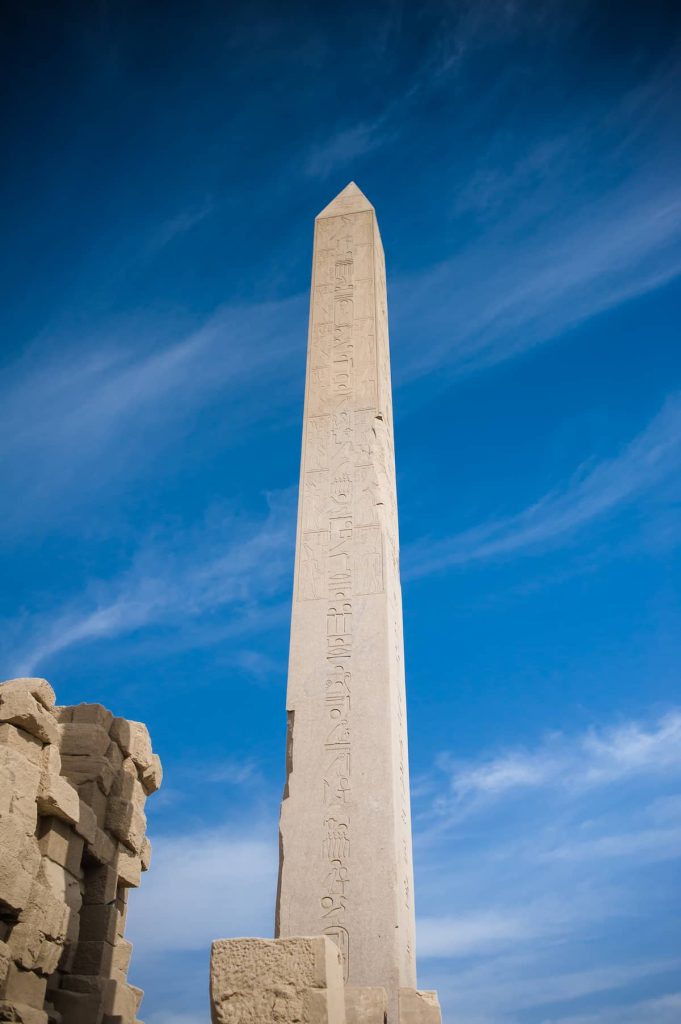
The Architecture of Ancient Egyptian Obelisks
4- How Did They Build Without Modern Tools? Architecture Techniques
Architectural knowledge from the ancient Egyptian civilization still stands as a benchmark, with various techniques considered to be in use today. All the more marvelous to consider that these constructions were done with basically simple tools, unlike our power machines. Their visionary and applied sciences were great by all standards of evaluation. Using simple tools such as a builder’s thread, an angle, a 52 cm measuring arm, and a straight edge, they created complex plans and diagrams for huge structures that continue to inspire us.
Studies carried out upon their Pharaonic monuments show that the stone blocks were worked with the help of hard stones and copper or bronze tools. Ramps of mud, wooden sliders, rollers, ropes, and levers were other means employed to bear and set the blocks up. Big stones were barged along the Nile in stone-carrying boats through effort and patience by teams of expert workers; overland, they dragged them with great finesse and further patience. It takes riverine synergy and coordinated effort from thousands of workers and officials, showing a glorious spirit of harmony and purpose.
Simplistic and innovative were the factors that led Ancient Egyptian architects to great techniques capable of producing some measure of enduring greatness, more so than being just symbols of their power or reign. Ancient Egyptians are said to have used different sorts of arts in the Egypt architecture that consisted of paintings with images of mythology and religion, sculptures of pharaohs, gods, and important people, and hieroglyphs, which are a form of writing that creates images filled with sounds and words.

The Architecture of Ancient Egyptian Pyramids
5- What Do the Walls and Columns Show Us?
Ancient Egyptian buildings did not just hold up the walls and columns system they also used to narrate specific stories or to promulgate certain messages. Temples, tombs, and palaces would have their walls adorned with pictures and symbols called hieroglyphs, an ancient writing system used by the Egyptians to document history, religion, and daily aspects. Such drawings would often portray the Pharaoh giving offerings to the gods, winning battles, or getting blessed into the afterlife.
Furthermore, columns carried significance, too. Many were formed after plants, mainly the lotus and papyrus, standing for life, creation, and the Nile River. Some columns would depict visits to scenes of festivals, ceremonies, or prayers, which had been carved and brightly colored.
Every one of these figures, signs, and shapes was planned in great detail. They were not mere decorative materials; every drawing, symbol, and form was a language of the Egyptians to express their ideas, ideologies, and stories. Through these new kinds of media, we can still explore the culture, religion, and everyday livelihood of ancient Egyptians, having passed thousands of years.
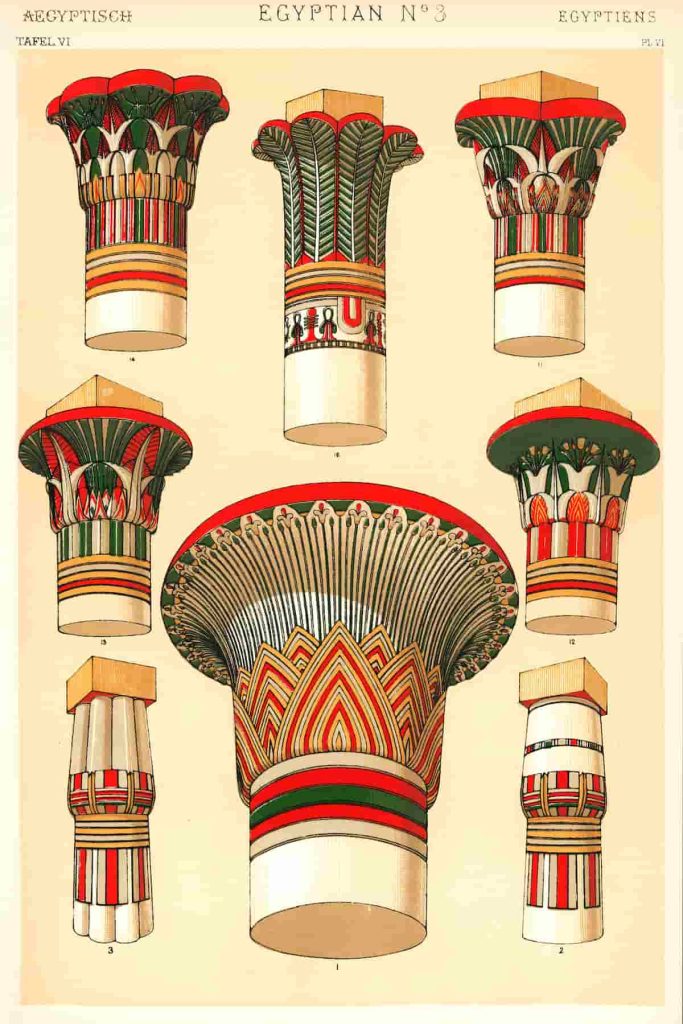
The Architecture of Ancient Egyptian Columns
6- Cool Facts About Ancient Egyptian Buildings
- Some of the temples were built in line with the sun and stars. On the other hand, on special days, the sunlight would penetrate the temple and light up a specific statue, as happens in Abu Simbel is called the Abu Simbel Sun Festival.
- The Egyptians used math and geometry to create perfect shapes, like the pyramids that align with the Cardinal Directions (north, south, east, and west)
- Many buildings took a long time to finish, and some took 20 to 30 years, and others took even decades of work and planning.
- The Great Pyramid of Giza was the tallest man-made structure in the world for over 3,800 years.
- The ancient Egyptians knew how to work as a team, which means that the workers were not only slaves but skilled and organized people.
- Some columns were shaped like lotus, papyrus, and palm trees, showing the importance of nature in Egyptian design.
- Hieroglyphs carved on the walls tell stories of the gods, pharaohs, and everyday life.
- Did you know that Obelisks were carved from a single piece of stone and could weigh over 300 tons?
- The Tombs of the pharaohs and kings in the Valley of the Kings were hidden in cliffs to protect them from robbers.
- Many temples had huge statues and courtyards to make the visitor feel the power of the gods and pharaohs.

